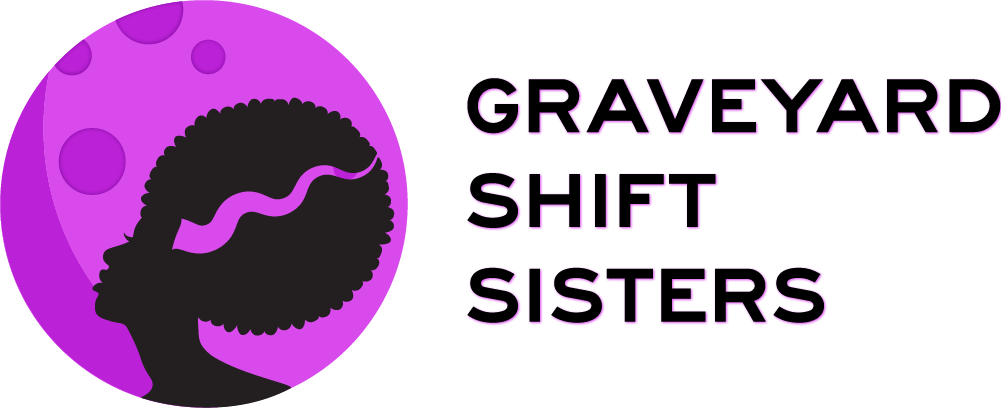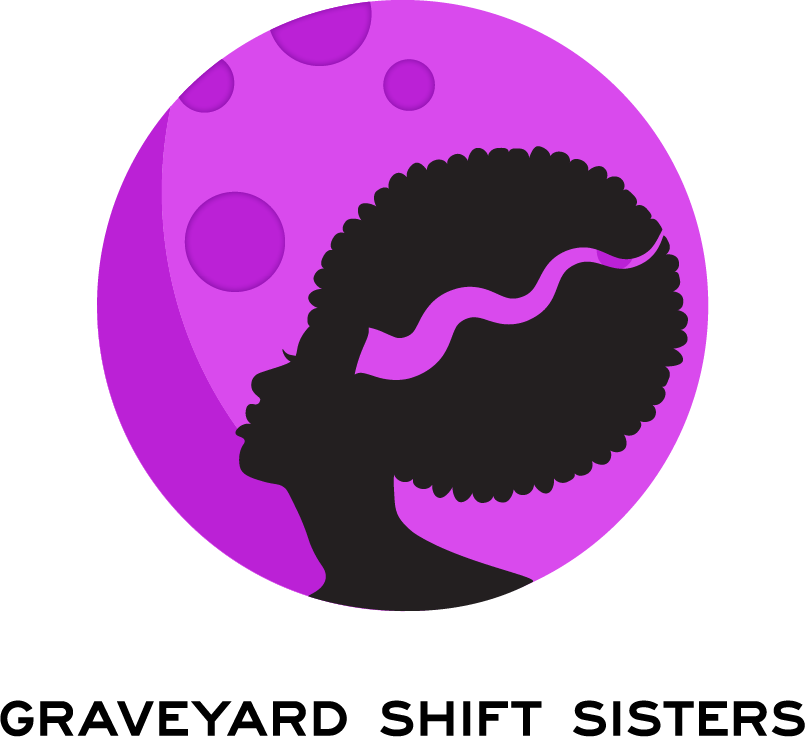Night-Mares & Crafting A Scare: Nicole Witte Solomon
European in origin. (Source)
Mare is the latest horror slider from director Nicole Witte Solomon (Small Talk) and her 4MileCircus partner Sean Mannion. This unsettling tale coming in just under five minutes manages to tell a well-rounded story through clever visual cues about a man's quiet, solitary day that toys with the thin line between dreams and reality. Certain technical choices are used to challenge the viewer, as Solomon reads 'harshness' in the exterior shots that bleach "the frame and exposing your fears" as a clue to what ails our protagonist.
As a lover of genre fare that leans towards the abstract, I wanted a minute of Nicole's time to pick her brain not just about the film, but how nightmares are, at their core, very personal to our own anxieties.
You’ve described Mare as unexpectedly “emotionally psychic.” What is your personal interpretation of the story that unfolded once you came to this conclusion?
What changed is just my emotional connection to the story. When I was making Mare, it was more of an exercise—I wanted to do a moody horror short dealing with anxiety and nightmares that was less campy and talky than past projects. I was (and am!) interested in anxiety and nightmares generally and wanted to continue exploring them. A lot of what ended up in Mare is personal for me and/or my co-writer (and star) Sean, but the motivation to make it was more intellectual than emotional.
Now, with the fact that my country has kind-of elected a genuine fascist who ran a campaign based on fear, hatred, bullying, lies, and an all-out war on the very concept of truth beyond what our narcissist-in-chief claims it is, I can’t help but feel like I’m living in a version of the film. I’m not sure if we’re all trapped in a nightmare that is slowly killing us all, or if the election was when we all woke up from a slowly, increasingly stressful nightmare and now are aware of the fact that we’re in mortal peril. Tonally though, the film fits how it feels for me to live here in the closing days of 2016—the constant, pervasive, mounting dread punctuated by bizarre violence. I have nightmares or stress dreams pretty much every night and usually wake up feeling like I was punched in the stomach, with my heart pounding. Not to center myself in this nightmare, I’m not nearly the most vulnerable person in this national nightmare. But that’s more or less what I meant by “emotionally psychic.”
Although, Sarah Schoofs (the other star) makes an infinitely more attractive and compelling soul-sucking demon than Voldemoron. Just saying.
There’s a great use of ambient sound perfectly placed in the film. I’ve always wondered, especially for a film with little to no dialogue, how do you as a filmmaker run through the process of choosing particular audio tracks to convey your story in the most effective manner?
Thank you! Sean and I planned the type of sound design we wanted back when we were writing the script. We wanted to skip all dialogue and score, and instead work with select types of ambient sounds, layered to ratchet up the unease as the film goes on. Most of the kinds of sounds you hear in the film were planned from the script writing stage.
Credit for choosing which actual tracks we used goes to Sean, who edited the film. We went back and forth quite a bit on the specifics in terms of placement, mix, etc, but he initially selected all the stuff. A lot of it is actually from NASA recordings of outer space! There are a lot of free sounds out there on the internet if you know what kind of thing you’re looking for.
As a fan of A Nightmare On Elm Street, what is your favorite nightmare from the franchise in regards to really tapping into a victim’s fear, desire, etc.?
You’ve described Mare as unexpectedly “emotionally psychic.” What is your personal interpretation of the story that unfolded once you came to this conclusion?
What changed is just my emotional connection to the story. When I was making Mare, it was more of an exercise—I wanted to do a moody horror short dealing with anxiety and nightmares that was less campy and talky than past projects. I was (and am!) interested in anxiety and nightmares generally and wanted to continue exploring them. A lot of what ended up in Mare is personal for me and/or my co-writer (and star) Sean, but the motivation to make it was more intellectual than emotional.
Now, with the fact that my country has kind-of elected a genuine fascist who ran a campaign based on fear, hatred, bullying, lies, and an all-out war on the very concept of truth beyond what our narcissist-in-chief claims it is, I can’t help but feel like I’m living in a version of the film. I’m not sure if we’re all trapped in a nightmare that is slowly killing us all, or if the election was when we all woke up from a slowly, increasingly stressful nightmare and now are aware of the fact that we’re in mortal peril. Tonally though, the film fits how it feels for me to live here in the closing days of 2016—the constant, pervasive, mounting dread punctuated by bizarre violence. I have nightmares or stress dreams pretty much every night and usually wake up feeling like I was punched in the stomach, with my heart pounding. Not to center myself in this nightmare, I’m not nearly the most vulnerable person in this national nightmare. But that’s more or less what I meant by “emotionally psychic.”
Although, Sarah Schoofs (the other star) makes an infinitely more attractive and compelling soul-sucking demon than Voldemoron. Just saying.
There’s a great use of ambient sound perfectly placed in the film. I’ve always wondered, especially for a film with little to no dialogue, how do you as a filmmaker run through the process of choosing particular audio tracks to convey your story in the most effective manner?
Thank you! Sean and I planned the type of sound design we wanted back when we were writing the script. We wanted to skip all dialogue and score, and instead work with select types of ambient sounds, layered to ratchet up the unease as the film goes on. Most of the kinds of sounds you hear in the film were planned from the script writing stage.
Credit for choosing which actual tracks we used goes to Sean, who edited the film. We went back and forth quite a bit on the specifics in terms of placement, mix, etc, but he initially selected all the stuff. A lot of it is actually from NASA recordings of outer space! There are a lot of free sounds out there on the internet if you know what kind of thing you’re looking for.
As a fan of A Nightmare On Elm Street, what is your favorite nightmare from the franchise in regards to really tapping into a victim’s fear, desire, etc.?
Oh my god. That’s such a good question. The Dream Child is one of my least fave Nightmares overall, but it has some good death scenes. Greta’s (eek, I think that’s her name?) force-feeding nightmare is one that really stands out as being successfully specific. I also like Shelia’s asthma attack in The Dream Master, which is pretty relevant to Mare. Anything with restricted breathing gets to me, as I’m also asthmatic.
Are there any other horror films you think tackle nightmares in interesting ways? If so, which ones and if not, is this an aspect you imagine delving into more in any of your future projects?
A Nightmare On Elm Street is my go-to in this department, even the weaker films have great nightmares. It’s not exactly horror, but Michael Haneke does great things with nightmares—I’m thinking about the one in Amour, specifically, though he uses them to great effect elsewhere, as well. Cronenberg does, too—I’m thinking of The Fly in particular. I was just watching the original Phantasm and I rather like the way that film blurs the reality/dream world line, something that sometimes bugs me but I really enjoyed here.
Dream sequences can either make you feel cheated or add tremendous depth. They can be cheesy and annoying or indispensable to storytelling and character development, as well as just being a cool opportunity to break the rules of the world you’re working with in some respects.
Do your own nightmares inform you in creative, personal ways? In what ways have you thought of them conceptually?
Oh, yes! A big part of the writing process for Mare was just me and Sean brainstorming recurring nightmares we have, seeing where the overlap was and how the pieces could fit together to create the effect and arc we wanted, for example.
I have certain things I dream about over and over again that I assume come from very deep-rooted fears of mine. So much of the creative work I do, filmic-ly or otherwise, is partially about me trying to face and process my own fears, or get in the head of a character and their fears. So nightmares are very useful touchstones for that. Often very dramatic, visual, already cinematic touchstones. They are rich, visceral material from which to draw, and thinking about them can be a kind of short cut to some unpleasant places in my psyche.

